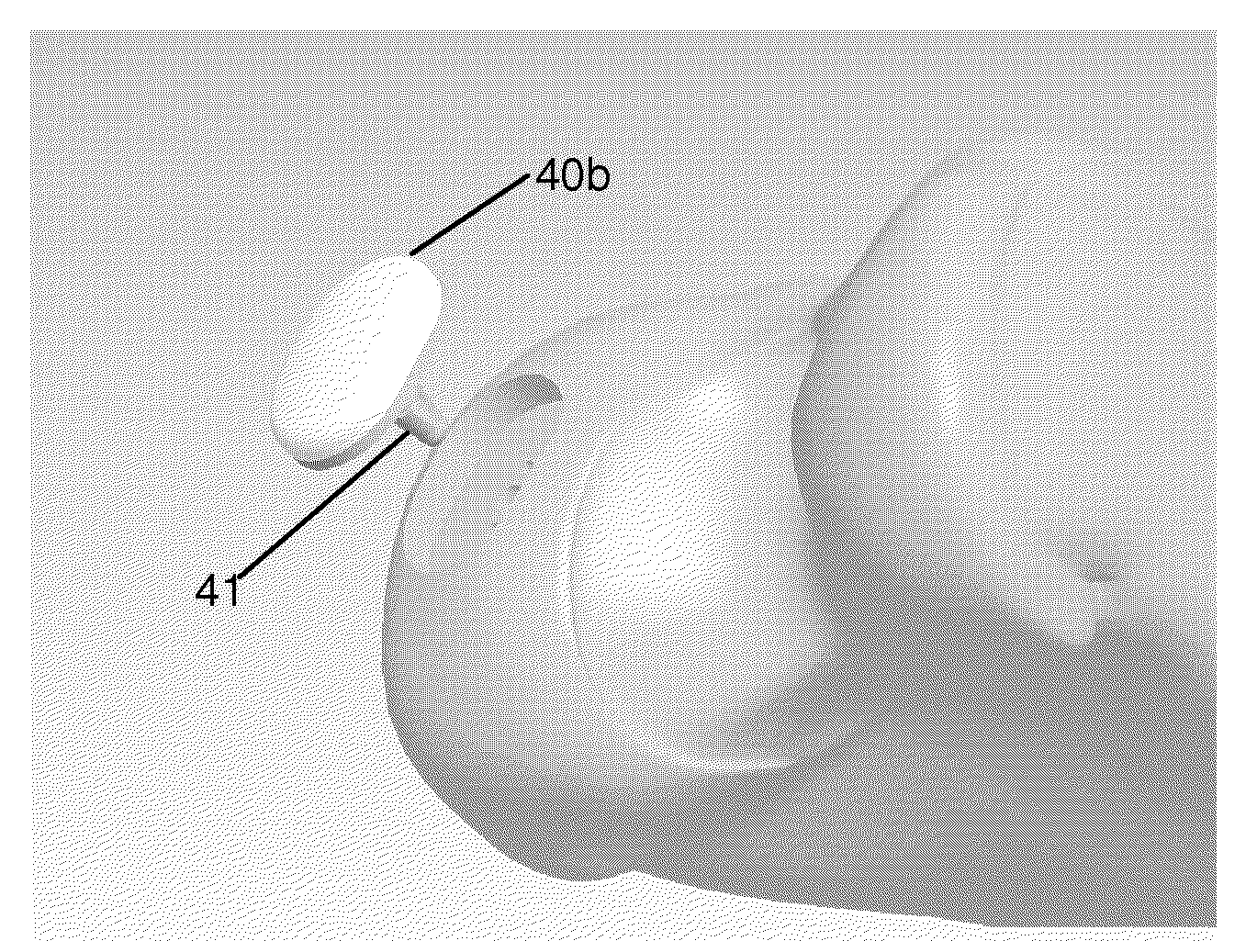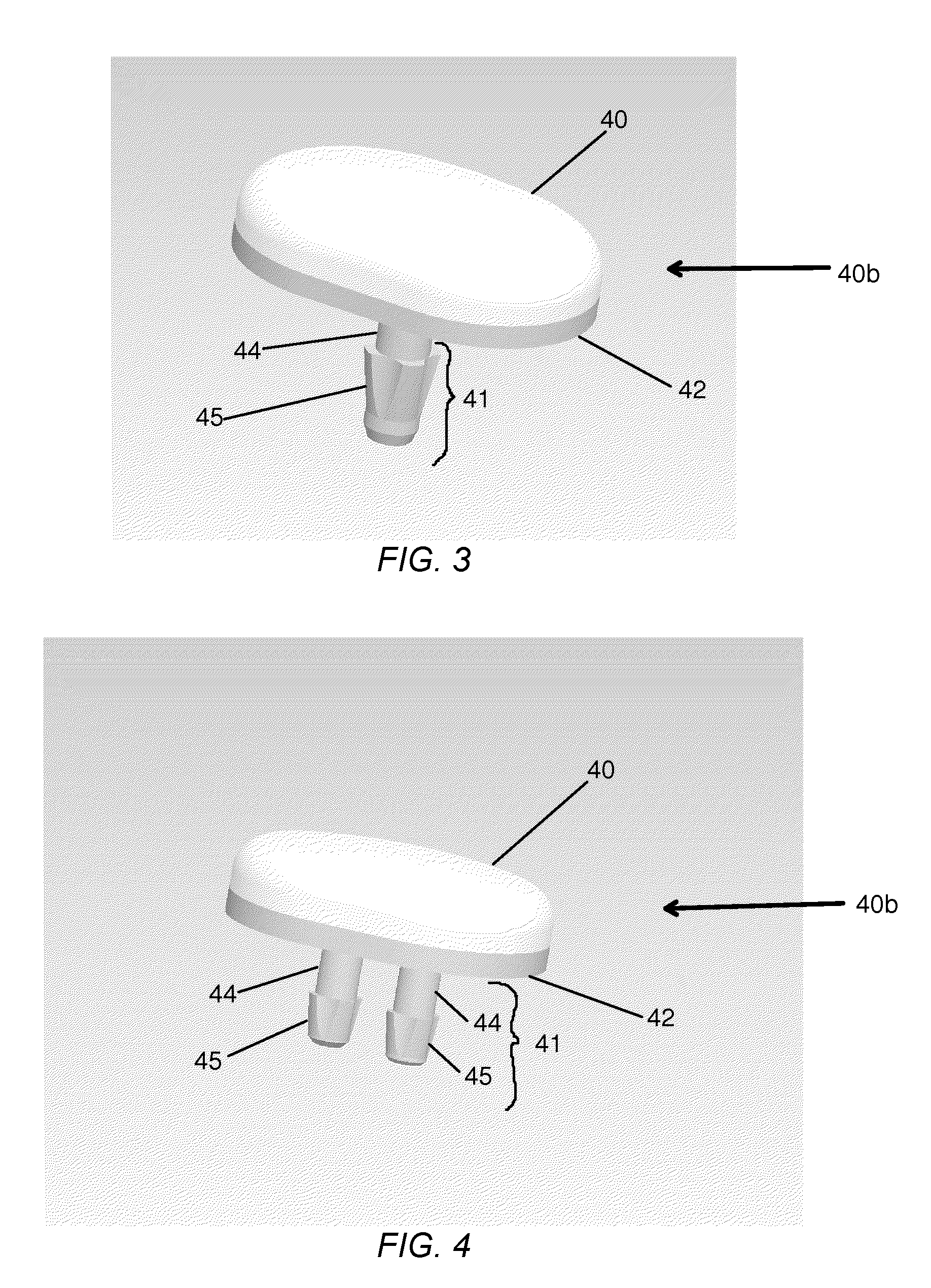Partial joint resurfacing implant, instrumentation and method
a technology for partial joint resurfacing and implants, applied in the field of partial joint resurfacing implants, instruments and methods, can solve the problems of inconvenient operation, inconvenient maintenance, and inability to fully recover, and achieve the effect of minimizing the removal of host bone and cartilage and maximizing the coverage of the d
- Summary
- Abstract
- Description
- Claims
- Application Information
AI Technical Summary
Benefits of technology
Problems solved by technology
Method used
Image
Examples
Embodiment Construction
[0057]For the purposes of promoting an understanding of the principles of the partial joint resurfacing implant, corresponding surgical instruments and surgical method for inserting the resurfacing implant, reference will now be made to the embodiments, or examples, illustrated in the drawings and specific language will be used to describe these. It will nevertheless be understood that no limitation of the scope of the invention is thereby intended. Any alterations and further modifications in the described embodiments, and any further applications of the principles of the invention as described herein are contemplated as would normally occur to one skilled in the art to which the multi-functional surgical instrument invention relates.
[0058]In this detailed description and the following claims, the words proximal, distal, anterior, posterior, medial, lateral, superior and inferior are defined by their standard usage for indicating a particular part of a bone, prosthesis or surgical ...
PUM
| Property | Measurement | Unit |
|---|---|---|
| Radius | aaaaa | aaaaa |
| Hydrophilicity | aaaaa | aaaaa |
| Durability | aaaaa | aaaaa |
Abstract
Description
Claims
Application Information
 Login to View More
Login to View More - R&D
- Intellectual Property
- Life Sciences
- Materials
- Tech Scout
- Unparalleled Data Quality
- Higher Quality Content
- 60% Fewer Hallucinations
Browse by: Latest US Patents, China's latest patents, Technical Efficacy Thesaurus, Application Domain, Technology Topic, Popular Technical Reports.
© 2025 PatSnap. All rights reserved.Legal|Privacy policy|Modern Slavery Act Transparency Statement|Sitemap|About US| Contact US: help@patsnap.com



